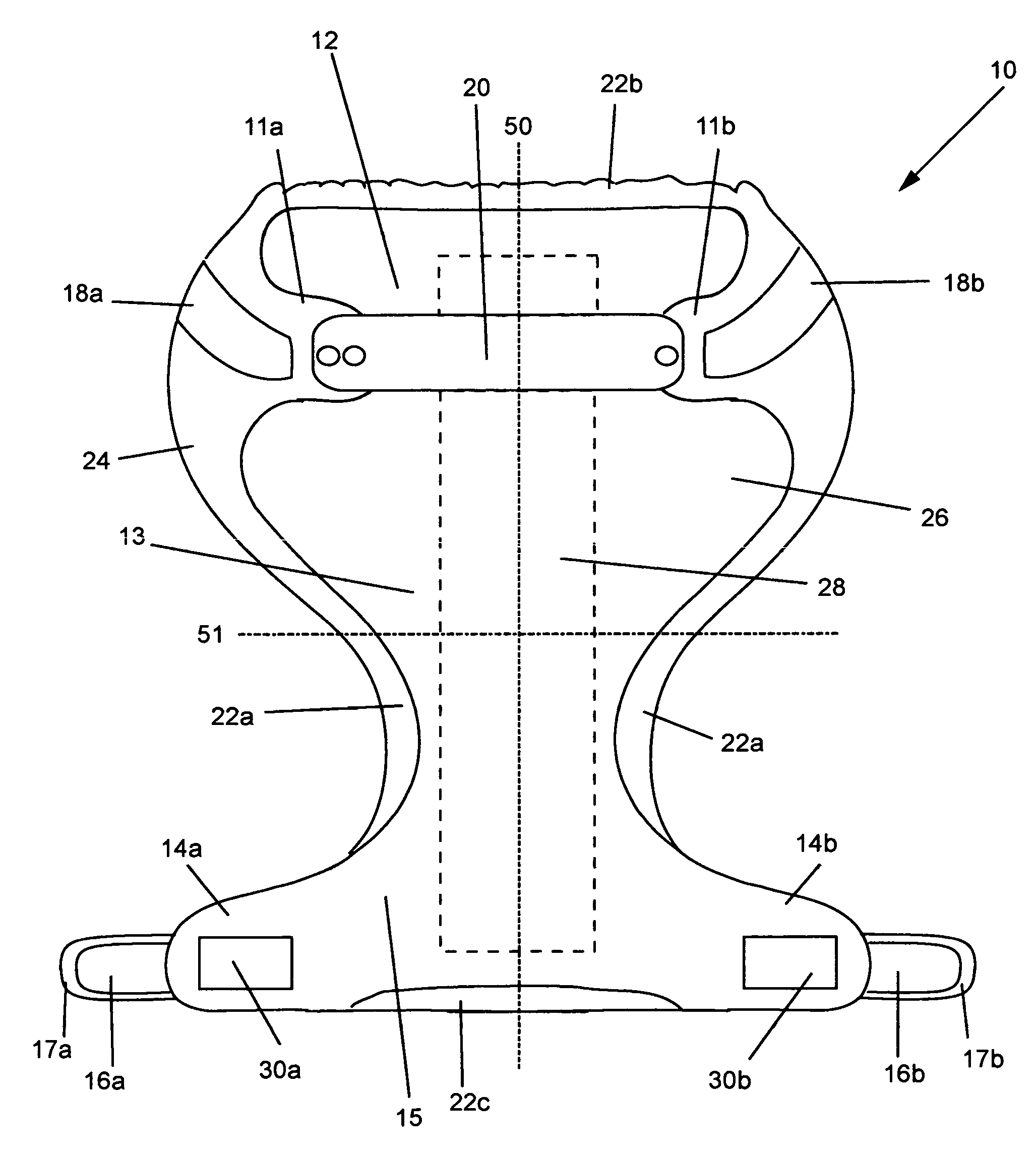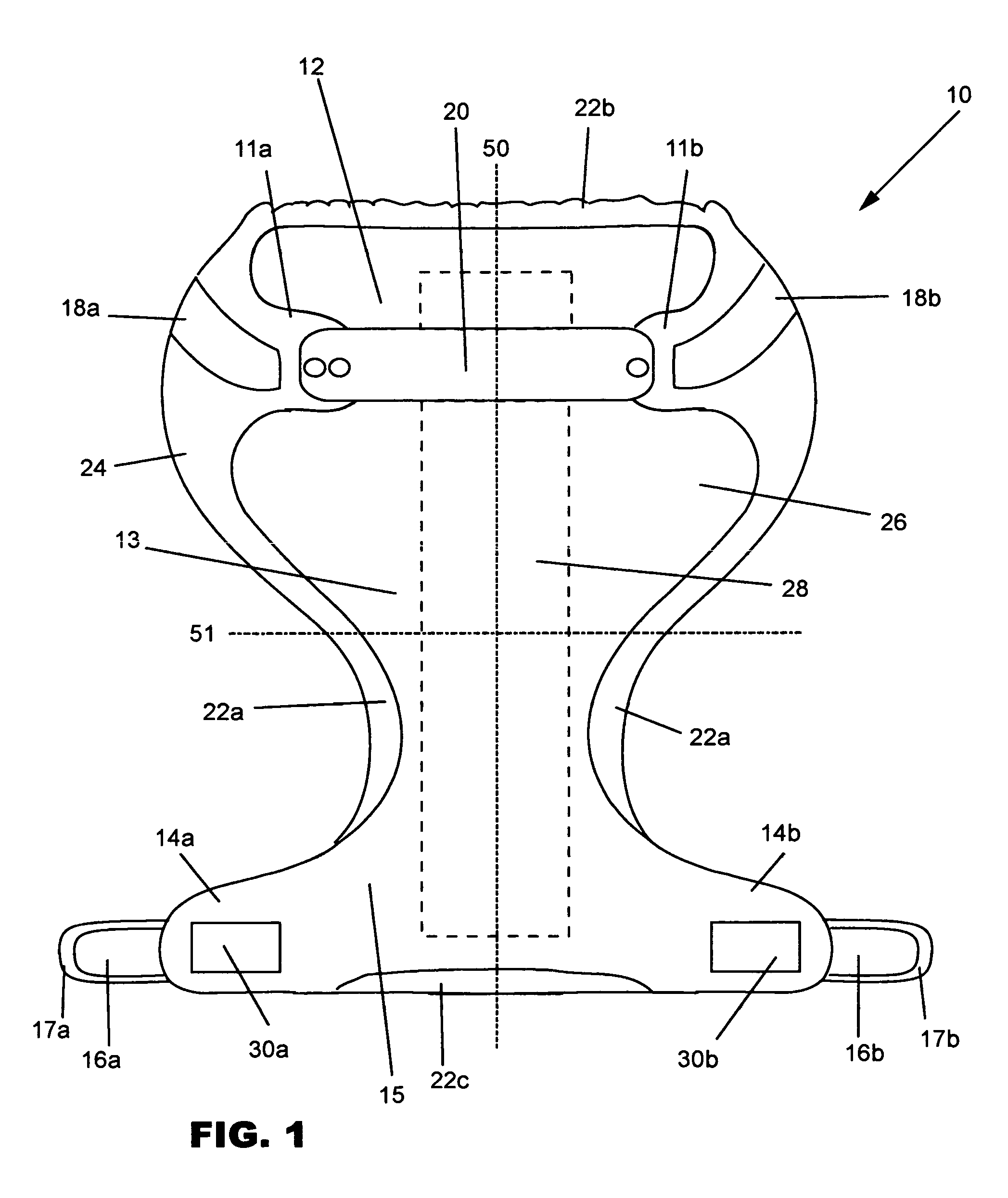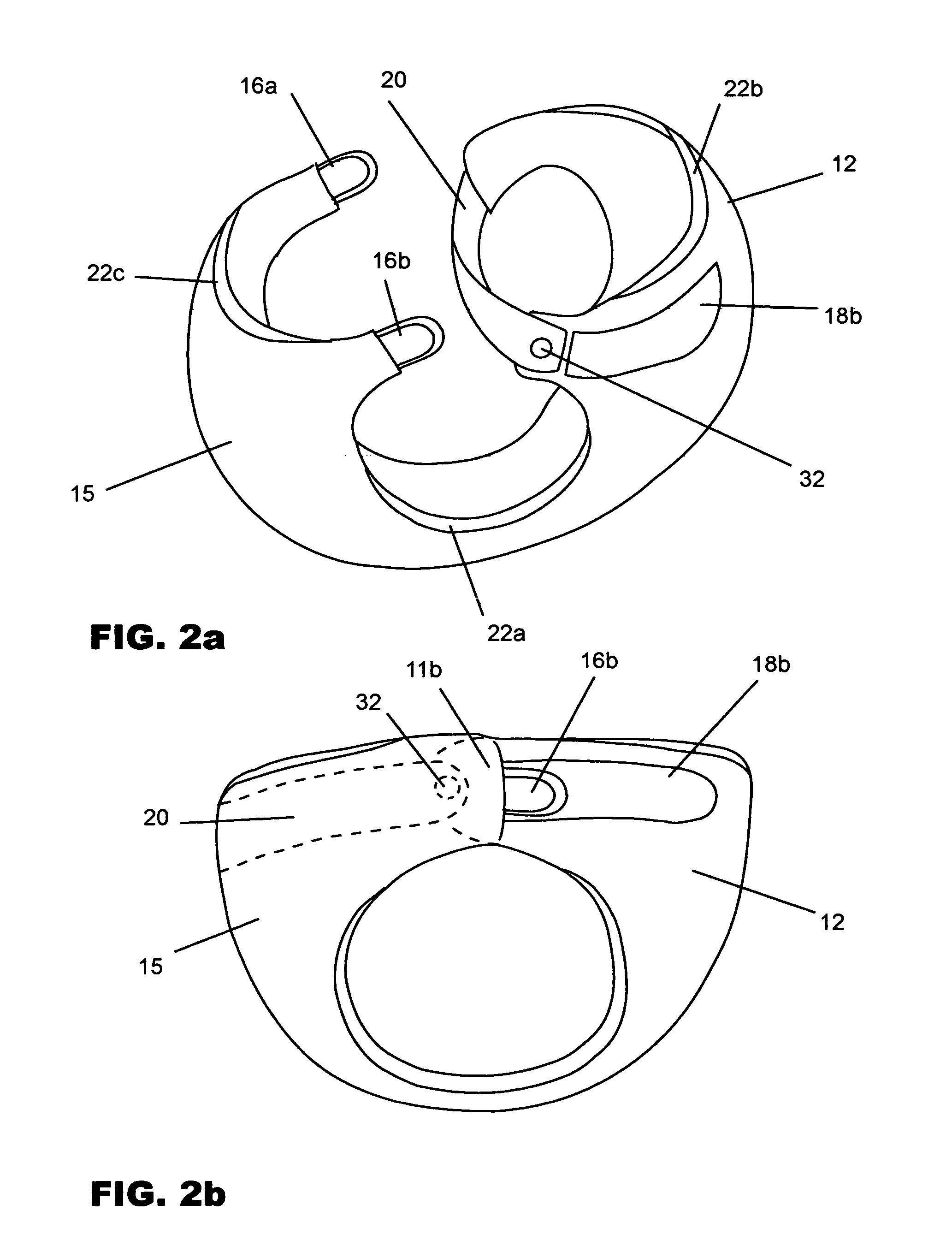Even though this practice is becoming more acceptable and known, many caregivers are still self-conscious about the practice because of its obscurity.
The clothing options available, which facilitate ease of frequent bathroom trips, only add to the embarrassment.
Practitioners' believe disposable diapers hinder potty learning, and have negative environmental, health, and financial impacts.
Disposable diapers are not considered natural because of the chemicals used therein, including dioxin,
super absorbent polymers, and tributyl-
tin.
Environmental concerns range from excessive landfill space and long
decomposition times, to the amount of raw materials used.
Practitioners' also feel that paper and plastic can't be as healthy or comfortable as cloth, and contribute the rise in
diaper rash to disposables.
One problem EC practitioners find regarding traditional clothing and diapers relates to the frequency in which infants eliminate bodily fluids.
Completely disrobing an infant as often as every 20 minutes can be very frustrating for the caregiver and infant alike.
Disrobing a squirmy baby or resistant toddler can also be very difficult.
Traditional pants or shorts can make the frequent disrobing process more
time consuming and frustrating, so they employ the use of baby legwarmers to cover the legs instead of pants, shorts, or other traditional baby clothing.
However, this still causes
frustration because putting a conventionally configured diaper back on and off is
time consuming and many babies do not like being placed on their back to get a diaper refastened, especially so often.
One problem with these is their appearance, which mimics that of a loincloth and can therefore be embarrassing.
Also, waterproof coverage is sometimes desired, which this method cannot accommodate.
Also, the fit is poor and excreta can easily escape.
Furthermore, the flat diaper can easily slip out of the belt at unplanned times, leaving undesired consequences such as excrement on the child's legs or the floor.
In addition, it may be undesirable to have exposed genitalia in
cold weather.
Many parents prefer their child to go naked to ease the process of Infant
Potty Training, but that has obvious limitations as well and cannot always be practiced.
Prior art does not address all of these important aspects and is not currently in use in this practice for various reasons.
So-called belted diapers could aid in this process, but there are significant disadvantages to the prior art if used in these circumstances.
Although the prior art solves many problems associated with belted absorbent garments, they do not address important issues related to
Elimination Communication practitioners' needs.
Besides the environmental and health concerns related to these single-use absorbent articles, there is a significant problem with comfort.
When VELCRO™ or other hook and loop type fasteners are secured on a relatively thin belt around the
waist of a user, it causes discomfort and
irritation.
Worse yet, it can cause chaffing,
skin injuries or even infection since it is an area of
close contact with excreta.
Because of the typical
fat accumulation on babies
stomach regions, it is virtually impossible to keep the hook and loop out of contact with the
abdomen.
These problems would be even more pronounced in the desired washable garment because the washable hook and loop fasteners on the market have even rougher, sharper edges than the paper or plastic hook and loop type fasteners.
An added area of discomfort
stemming from disposable prior art belted garments is the area of frontal attachment concerning the front of the diaper to the belt portion, which when engaged assumes the diaper a pant like shape.
This further aggravates the frontal
abdomen region and can cause possible problems due to
skin irritation.
This also leads to another problem with prior art regarding the front portion attachment location.
When a diaper, training pant or other absorbent article is releasably secured on the
waist belt, it is difficult to attach in a way that the
front panel lays smoothly in its intended position.
This may be easily accomplished on an older user, but on a squirming baby or toddler, or on a baby with abundant
abdomen flesh it is very difficult.
In addition, this securing location often lends to the hips of the wearer exposed, giving the article an undesirable loincloth type appearance.
Another problem common with belted absorbent garments pertains to when the belt is set on its smallest settings; adjusted for a child with a small waist.
The remaining free ends of the belt suspend down the front of the waist region and possibly down further causing
irritation to the genitalia.
Finally, belted disposable diapers are expensive to manufacture.
The belt area is of particular concern because the expense it adds to the manufacturing process.
Yet, the problem remains with a disposable
chassis and the
front panel securing to the belt.
In the crowded art of absorbent articles, limited prior art exists which teaches reusable, washable belted absorbent garments.
This would be a difficult area to secure on an energetic baby.
Also, securing in this area could easily lend to leaking excreta, and a compromised fit.
This type of arrangement is also more difficult to adorn and remove.
Other problems pertain to the area of frontal attachment, which may tend to leak, cause discomfort, and be difficult to attach on a baby.
None of the prior art teaches an adequate method which aids in keeping the hook and loop or mechanical attachment means undoubtedly away from the
sensitive skin of the baby when the baby is held in “classic position” for
Elimination Communication.
While this can work properly for a toddler, it cannot sufficiently accommodate the needs of a caregiver with an infant in classic position.
Also, the hook portion of washable hook and loop can easily gather hair and other debris which is very difficult to remove and also compromises the securing ability of the closure.
Finally, typical washable diapers with hook and loop have the added problem of having the hook secure to other clothing in the
laundry, thus damaging delicate items and making it difficult to separate clothing items after washing and
drying.
The belts are further characterized in that they do not secure with hook and loop at the waist, thus keeping the abdomen sufficiently away from sharp edges.
 Login to View More
Login to View More  Login to View More
Login to View More 


